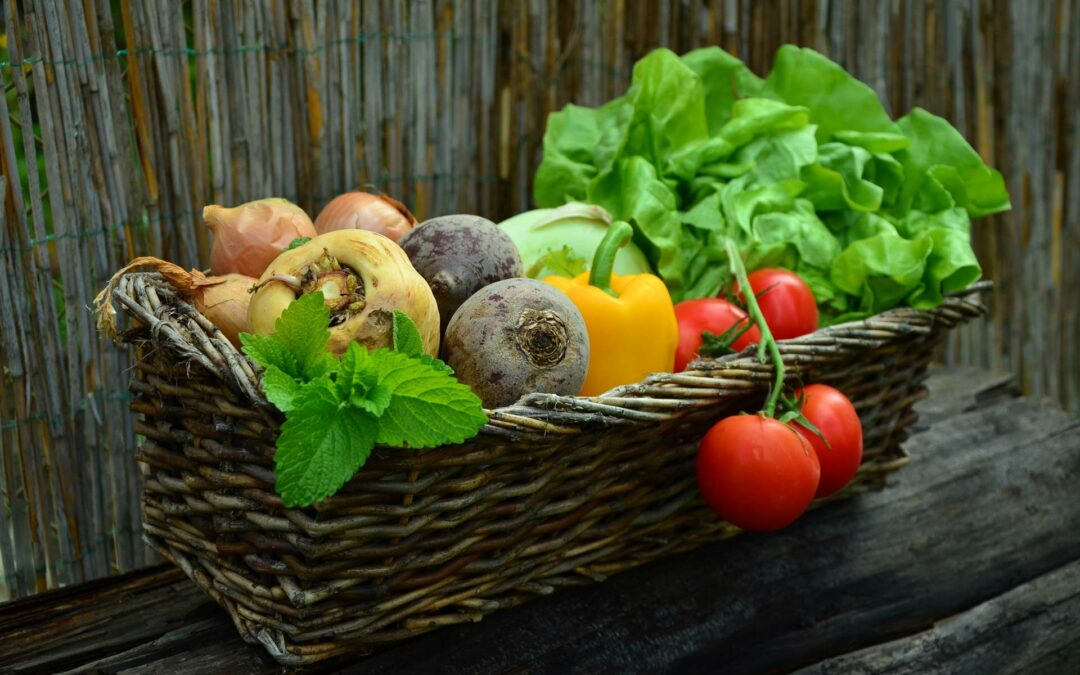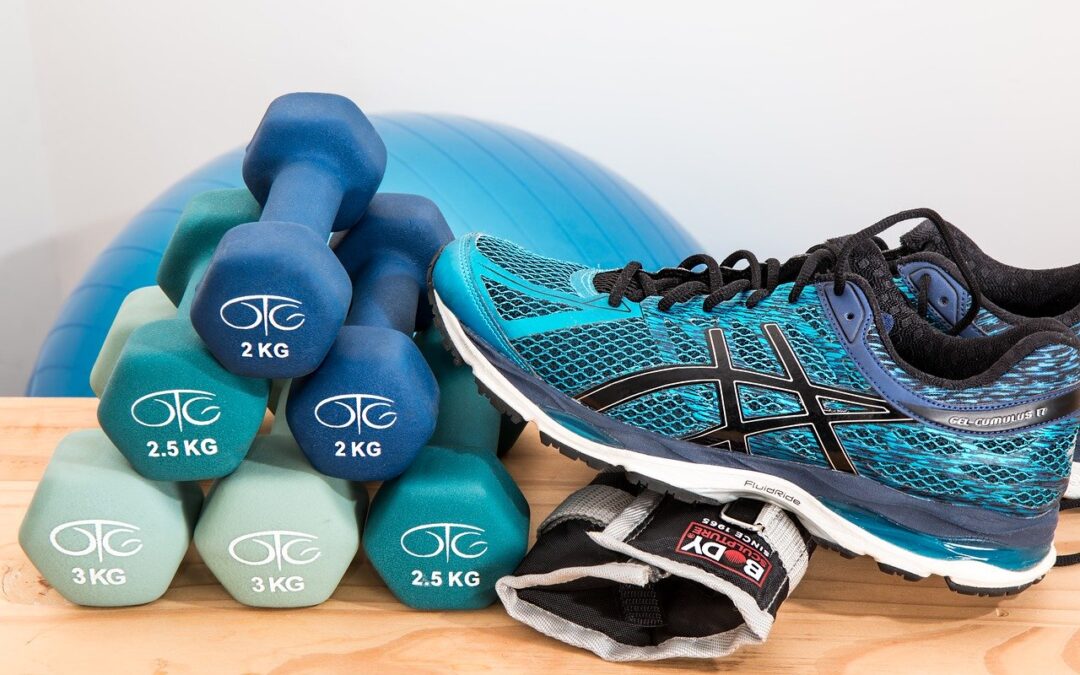
by Kirsten Chesney | Apr 16, 2020 | COVID-19 Health Tips
The CDC is recommending each person to wear cloth face coverings when going out in public or to places where it’s difficult to maintain 6 feet of social distancing. The surgeon general even released a video demonstrating how to fashion a quick face mask out of some cloth and rubber bands.
But what’s the science behind fabric masks? Especially anything that is homemade?
Fabric masks will not filter out very tiny nanoparticles the way that N95 masks can, but they are still able to offer protection against airborne viruses in droplets. COVID-19 is found on surfaces as well as within droplets from a cough or a sneeze. These droplets are large enough to be trapped by the weave of fabric.
Of course, every fabric has a different type of weave, some threads are spaced out further apart than others. This means the effectiveness to trap airborne virus droplets will vary depending on the type of weave. However, if the weave it tight, fabric masks could be comparable to some surgical masks.
IMPORTANT: each time you wear a fabric mask, ensure that it is clean! Do no reuse a mask without first washing it!
Although research is slim on the proper disinfection procedures for fabric masks, it does show that the SARS virus was inactivated by using high heat and detergent. Using the same wisdom, fabric masks should be run through a hot wash using laundry detergent. This can be a thorough hand-washing rather than having to use the washing machine every day.
People might touch their faces more often when they’re wearing a mask. To avoid possibly transmitting the virus from your hands to your face, be sure to wash your hands before andafter adjusting your mask.
The bottom line is that fabric face masks are simply another barrier we can use to help protect ourselves and others from COVID-19. Masks are not the one-stop answer and they can be used improperly if we aren’t mindful of washing them. The best defense against COVID-19 is social distancing. Since the virus cannot exist outside of a living cell, maintaining distance between people prevents any free-flying cough droplets from landing on others. When these droplets land on surfaces, they can last for several days. This is why it’s imperative to disinfect surfaces regularly. Disinfecting, social distancing, and wearing fabric masks are all ways to do our part in slowing the spread of COVID-19.

by Kirsten Chesney | Apr 16, 2020 | COVID-19 Health Tips
COVID-19 has people grabbing at any information they can find about how to protect themselves and fight off illness. So far, there is no cure for COVID-19 regardless of what may be purported online. Gargling with bleach (or just gargling in general) seems to be a popular one that I have seen circulating the internet! Please do not do this!
Other suggested remedies, like chiropractic adjustments, taking supplements, drinking teas, or using essential oils, will certainly not harm us and likely improve aspects of our health. With COVID-19 on everyone’s minds, general health-boosting practices should not be forgotten.
Superfoods have been a popular topic in health-conscious circles, and for good reason: although it is not a medically recognized term, superfoods are those foods which are highly dense with a variety of nutrients. Such nutrients are vitamins, minerals, fiber, antioxidants, phytonutrient compounds, fatty acids, and other components that benefit a person’s health and well-being.
Any viral illness can be strong but our bodies can be stronger and fight back. While we frantically search for toilet paper, take a moment to swing by the produce section of the grocery store and stock up on foods that will fight back!
Here is a list of the top 10 superfoods:
1) Kale: is one of those leafy green vegetables we all talk about eating more of. As a whole, leafy green vegetables provide vitamins A, K, C, and the B vitamins. They also contain minerals such as manganese and calcium. Kale is no different and represents a whole-food category that should be on our plates every day! Sautéing kale ever so slightly will make them easier to digest as well as give them a slight crunch (add salt and you’ve got yourself an addicting healthy snack!).
2) Avocados: are top on people’s minds when they think of healthy fats (and they’re right!). Even better, avocados are also rich in potassium, folate, vitamin C and vitamin K. Spread avocado on toast, sliced in a salad, as a topping in a Buddha bowl or homemade chili, or blended in a green smoothie!
3) Blueberries: are the quintessential example of a superfood. They are full of phytonutrients, antioxidants, manganese, and vitamins C and K. Enjoy them alone or as yummy toppings on salads, cereals, oatmeal, yogurt, or in smoothies!
4) Salmon: is one of the healthiest fish you can eat. Wild Alaskan (Pacific) salmon is a very low-mercury fish and is the only preferred salmon to eat (most salmon is Atlantic salmon and contains high levels of mercury). Salmon is packed with omega-3 fatty acids that not only fight inflammation but also impact brain health and protect against neurodegenerative diseases. Wild caught Pacific salmon is also found as a canned item which is a good option for a quick way to make salmon patties or as a dip for crackers.
5) Wheatgrass: comes from the sprouted leaves of the wheat plant. It does not contain any of the wheat seed and so is naturally gluten free. It contains iron, magnesium, calcium, as well as chlorophyll. It is great to add to smoothies!
6) Flaxseeds: are yet another food known for its healthy fat. The fat in flaxseeds can be converted into omega-3 fatty acids, the same type of fat in salmon. Flaxseeds also contain thiamine (an amino acid), phosphorus, manganese, magnesium, protein, and fiber! Enjoy them in salads, on oatmeal, in granola or hummus, or as a liquid as a dressing. To get the most benefit out of flaxseeds, buy them whole and then grind them fresh right before eating them.
7) Coconuts: contain another type of beneficial fatty acid called medium-chain triglycerides (MCT’s). This type of fat supports our gut health and has antioxidant properties. Coconut oil in particular can help in losing weight, preventing bone loss, and keeping hair healthy. Better yet, coconut oil is a great cooking oil (unlike cold-pressed oils) and can also be used in baked goods.
8) Green tea: is the champion of the detox world and helps our bodies increase the production of detoxification compounds. Further, green tea strengthens our immune system, protects our liver, boosts metabolism, and decreases our risk for heart disease. Of the types of green tea, matcha green tea contains more concentrated antioxidants. Feel free to drink a couple cups a day!
9) Cinnamon: is loved by all, but isn’t only for fall-time treats. It is packed with antioxidants and can lower blood sugar and cholesterol as well as decrease inflammation. Cinnamon can be sprinkled in yogurt, smoothies, oatmeal, pancakes, or toast for a fun way to spice things up!
10) Ginger: has been used for its healing properties for thousands of years. It contains a polyphenol called gingerol that’s able to relieve nausea, increase memory, decrease high blood sugar, and reduce muscle pain. Buy fresh ginger and shave some into a smoothie or a salad. It can also be an ingredient in sauces or spice blends in a powdered form. Drinking ginger tea is another way to enjoy its benefits.
Since we are spending more time at home these days and practicing social distancing, why not also practice incorporating more of these superfoods into our meals? We certainly have the time and grocery stores are not going to run out!

by Kirsten Chesney | Apr 16, 2020 | COVID-19 Health Tips
Healthy tips during Shelter in Place wouldn’t be complete without a discussion about exercising. With the temporary closure/altered hours of non-essential businesses, you’ve probably found that local gyms, YMCA’s, and other fitness centers are closed. This doesn’t give you a good excuse to stop exercising though! As we’re nearly 3 weeks into this pandemic and with no assured ending, it’s imperative to begin/continue with an exercise routine while social distancing.
A sedentary lifestyle has several negative health impacts and can lead to unhealthy eating and mental disengagement. Physical activity positively impacts and decreases our stress (which can be heightened during social isolation and lack of outlets away from family members). Physical activity also maintains mental health and well-being, as well as physical health. Regular exercisers experience a lowering of high cholesterol and blood pressure, blood sugar regulation, weight control, bone strengthening, healthy arteries, and more.
Aim for a minimum of 2.5 hours of moderate intensity exercise per week. This equates to 30 minutes of exercise, 5 days per week. Of course, your body doesn’t mind at all if you do more! Check out these suggestions for getting in those 30 minutes during self-quarantine:
Take active breaks throughout the day. This can be three 10 minute breaks, two 15 minute breaks, or any combination that suits your schedule. Short bouts of exercise will add up to your target goal per day. Some examples of breaks would be household chores like yardwork, cleaning, or gardening. Playing with children or pets, and even dancing in the living room, are great ways to burst into action.
Follow an online exercise class. There is a plethora of online classes out there, some even as simple as following an exercise YouTube channel (no subscription or payment required!). Make sure the level of difficulty matches your abilities, balance, and strength. We don’t want any injuries!
Walk. This can be walking outside, along a trail or around the neighborhood. To increase your heartrate, aim for walking one mile in 20 minutes. This would be 3 miles per hour and considered a moderate pace. Alternatively, simply walking around the house during the day will still provide benefit even if it’s not at a moderate pace. Try walking around the house as you’re talking on the phone or while listening to an audiobook.
Stand up. Look for ways to replace usual sitting activities with standing. Rig up a standing desk or be intentional about standing up every 30 minutes. While you’re up there, you can do some simple stretching or weight lifting (we won’t mind ????).
Lift weights. If you have hand weights, stretch bands, soup cans, water bottles (or jugs), or even sacks of dried beans, you’re in good shape to begin a simple weight lifting regimen. Be sure to lift the right amount of weight that will give you a light sweat and increase your heartrate. You also want to feel a muscle burn (but without pulling a muscle).
Incorporating these suggestions into your day will help you reach the goal of 2.5 hours per week of physical activity. Your stress levels, mental health, and physical health will collectively benefit from doing so. Plus, you’ll be able to leave self-quarantine in better shape than when you went in!

by Kirsten Chesney | Apr 16, 2020 | COVID-19 Health Tips
Minimize Grocery Store Trips
Plan ahead for meals for the next seven days, as well as any other home/car/children/pet supplies you might need. Aim for stepping out once a week if at all possible.
Purchase Nutrition-Packed Foods That Keep
Focus on nutrient-dense foods that can stay fresh for a week or longer. Examples of this are whole grains such as oatmeal, brown rice, whole grain pasta, quinoa, etc. Fruits with longer shelf lives are apples, citrus, watermelon, kiwi, pineapple, melons, under-ripe bananas, under-ripe avocados, and frozen fruit. Good vegetables to purchase would be, celery, broccoli, potatoes, carrots, squash, garlic, onions, Brussel sprouts, peas, corn, green beans, and frozen vegetables. Other foods include, frozen meat, cartons of broth, nut milk, canned or dry beans, nuts, and eggs.
Avoid Frozen Dinners and Snack Foods
These are high in sodium, harmful fats, and processed/artificial ingredients.
Try Grocery Delivery
Having your groceries delivered to your door or even available for you to simply pick up at the store front will help maintain social distance while also saving you time.
Reconnect with Family
Increased time with family members during quarantine can be a stressful adjustment. Reconnect during meal times by involving the family with cooking new recipes. Encourage telling stories or sharing goals around the table. Focus on keeping the conversation light and upbeat.
Maintain a Positive Mindset
Keeping a healthy mindset is critical to getting through this pandemic. Practice stress management techniques such as walking the dog, taking a relaxing bath, calling a friend, or spending time with your children. Stick to a routine as much as possible. Keep a healthy sleep schedule and eat meals at regular times. If you are schooling children at home, segment the day into chunks, focusing on one subject at a time and transitioning to a new activity every 45 minutes to keep kids engaged.
Stay Physically and Mentally Fit
Establish ways to exercise without leaving the house. Examples include, following an instruction video for yoga, pilates, weight lifting, kick-boxing, etc in the living room. Maintain your home’s landscape bushes and trees, or play a ball sport in the backyard with your kids. Keeping mentally fit is just as important as physical exercise. Take time to enjoy your hobbies: cook, read, write/journal, create DIY projects, or organize photo albums into a scrapbook.
Everyone is going through this together. Remember to be neighborly, donating food or supplies to those who aren’t able to leave the house. Make the most of this extra time away from distraction and let’s come out of this stronger and wiser!




